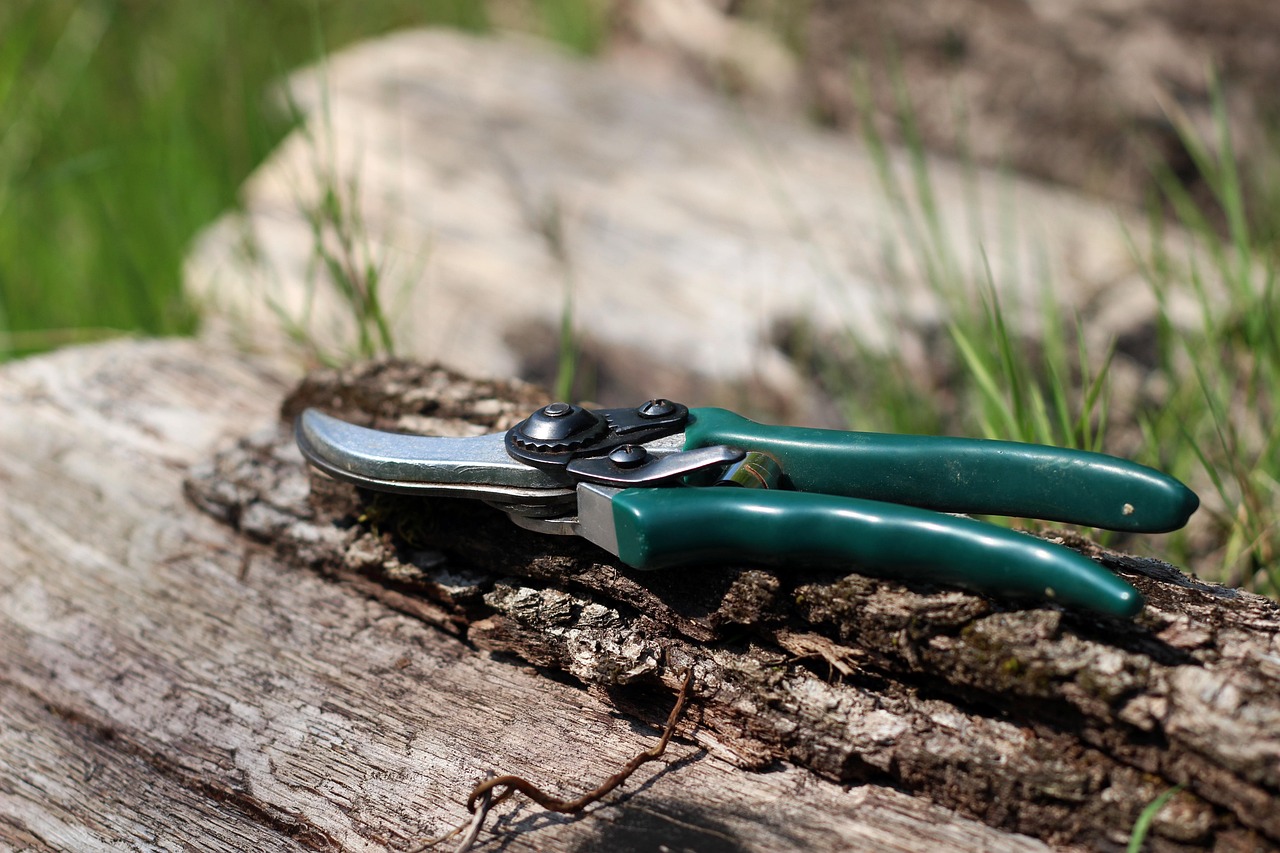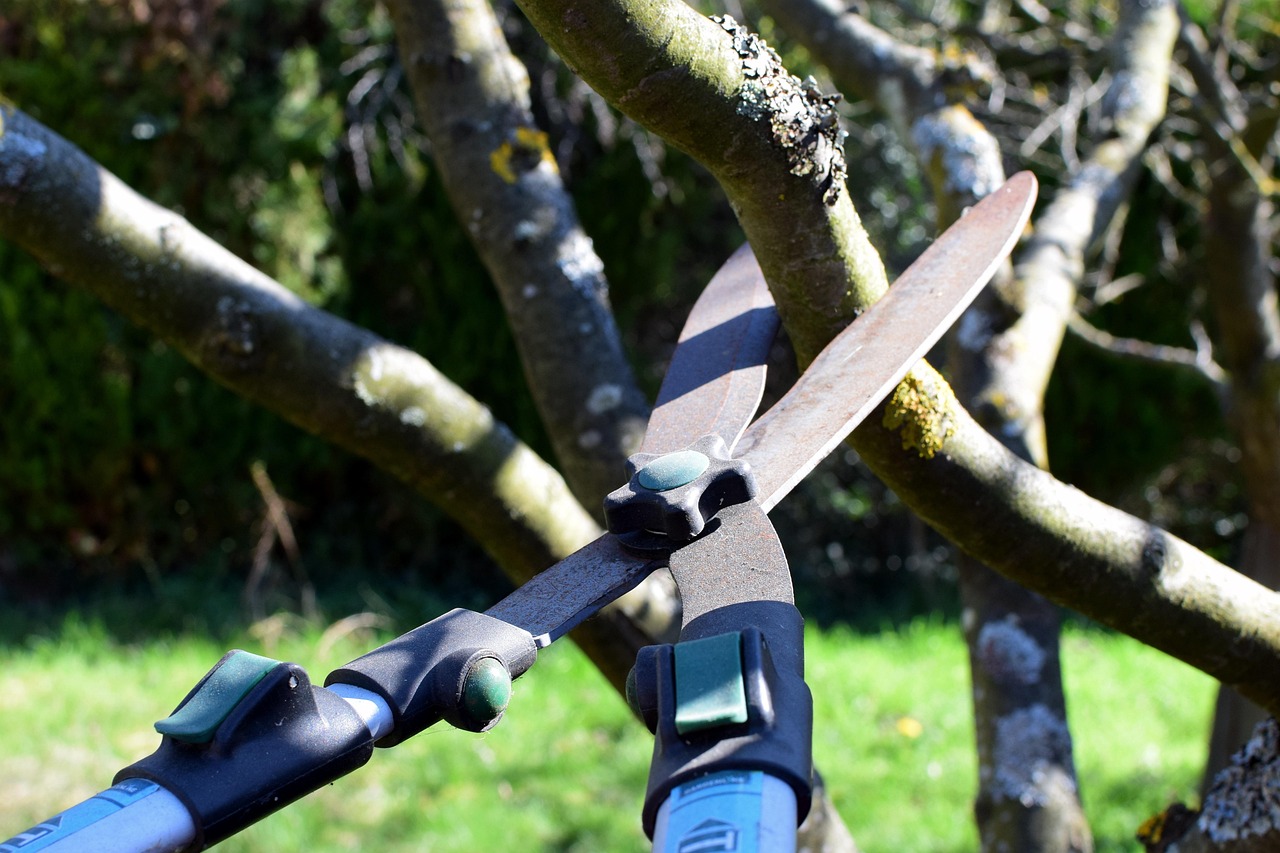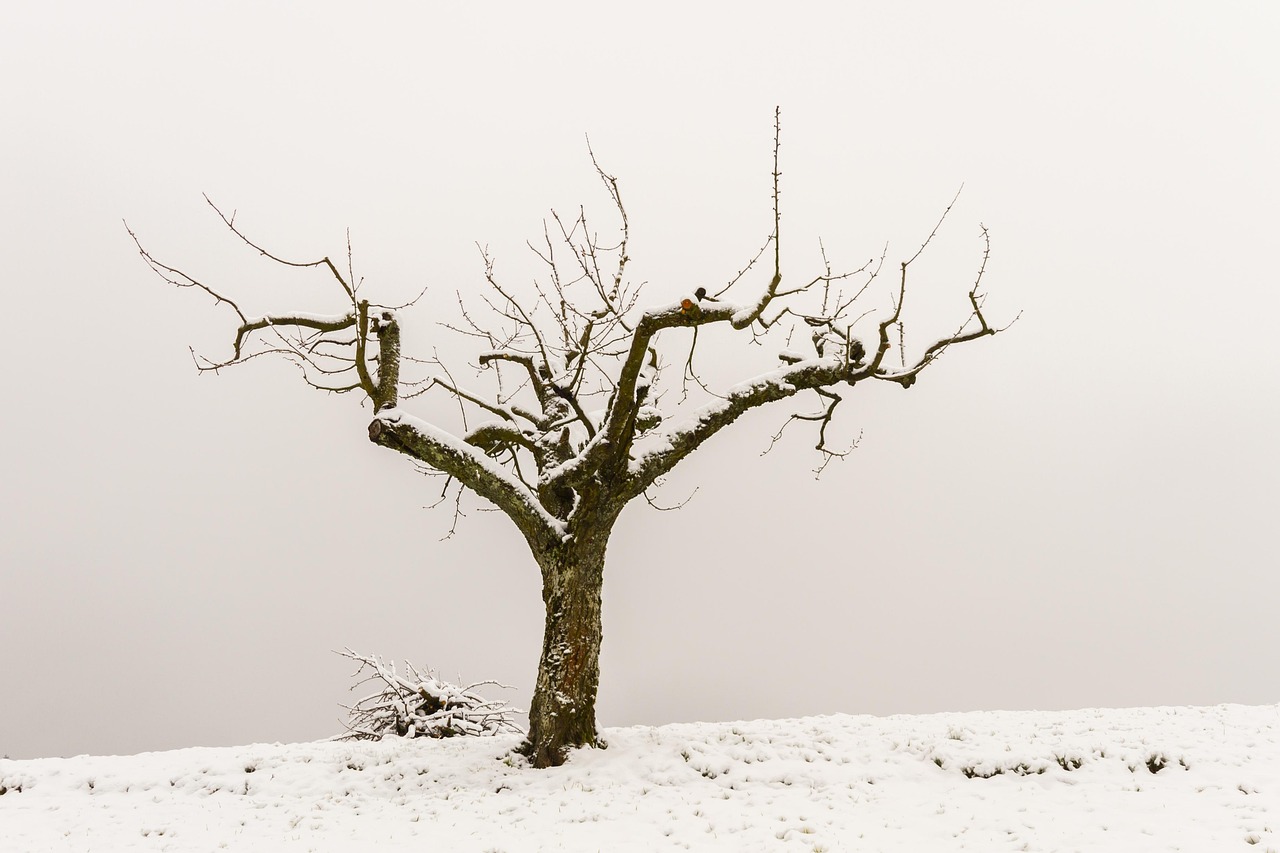Seasonal pruning is essential for maintaining orchard health. It involves cutting back trees at specific times of the year to promote growth, improve fruit quality, and prevent diseases. A well-planned pruning schedule supports overall tree vitality and increases yields.
Pruning is a fundamental practice in orchard management. It helps shape trees, encourages robust growth, and enhances fruit production. The timing of pruning is crucial. Different seasons call for different techniques and approaches. Understanding these seasonal needs can significantly impact the orchard’s overall health and productivity.

In general, pruning can be categorized into three main seasons: winter, spring, and summer. Each season presents unique opportunities and challenges for orchardists. By adapting pruning methods to the specific requirements of each season, orchard owners can ensure that their trees remain healthy and productive.
Understanding Seasonal Pruning
Seasonal pruning is not merely about cutting branches. It involves a strategic approach to enhance tree structure and health. Different types of trees have varied responses to pruning at different times of the year. For instance, deciduous trees may need more attention in winter while evergreen species may require adjustments during the growing season.
Here are some key benefits of seasonal pruning:

- Improved air circulation within the canopy.
- Enhanced sunlight penetration, promoting better photosynthesis.
- Reduced risk of disease and pest infestations.
- Encouragement of new growth and fruiting wood.
- Better management of tree height and shape.
In addition to these benefits, following a seasonal pruning plan can help in maintaining tree balance. A well-balanced tree is less likely to suffer from stress, making it more resilient against environmental threats. In turn, this resilience leads to healthier fruit production over time.
Winter Pruning
Winter pruning usually occurs during dormancy when the trees are not actively growing. This time is ideal because it allows for easier visibility of the tree structure without leaves obstructing the view. Winter pruning typically happens between late December and early March, depending on the local climate.
The primary goals of winter pruning include:

- Removing dead or diseased wood to maintain tree health.
- Shaping the tree structure to prevent overcrowding.
- Encouraging new growth for the upcoming growing season.
During this period, it is crucial to use clean and sharp tools. Making clean cuts reduces damage to the tree and helps prevent infections. Additionally, it is important to avoid heavy pruning, as excessive cuts can stress the tree.
Spring Pruning
Spring is a time of renewal and growth in the orchard. Pruning during this season focuses on fine-tuning the shape of the tree and removing any suckers or water sprouts that may have emerged during dormancy. Spring pruning typically occurs after the last frost but before the trees fully leaf out.
The objectives of spring pruning are as follows:

- Enhancing light exposure to developing fruit buds.
- Removals that encourage airflow, minimizing disease risk.
- Adjusting tree shape to support scaffold branch development.
Spring pruning must be done carefully, as trees are beginning their growth cycle. Over-pruning can lead to reduced fruit yields, so it is essential to assess each tree’s needs individually. Observing how trees respond to spring conditions can guide future pruning decisions.
Summer Pruning
Summer pruning is often less intensive but equally important. It typically takes place when the tree is fully leafed out, usually from June to August. This timing helps in controlling tree size and encourages lateral growth rather than vertical growth.
The focus during summer pruning includes:
- Removing excess foliage that blocks sunlight from reaching fruit.
- Controlling tree height and promoting a more manageable shape.
- Thinning out crowded branches to improve airflow.
Summer pruning can also help evaluate how well trees are responding to their environment. By observing growth patterns during this period, orchardists can adjust their management practices accordingly for better results in future seasons.
| Season | Main Focus | Key Practices |
|---|---|---|
| winter | Dormant Tree Management | Remove dead wood, shape structure |
| spring | Encourage Growth | Sucker removal, light shaping |
| summer | Control Size & Shape | Thinning foliage, managing height |
A well-structured seasonal pruning plan not only supports individual trees but also enhances the overall health of the orchard ecosystem. By staying attuned to the specific needs of each season, orchardists can foster stronger trees that yield higher quality fruits year after year.
Tools and Techniques for Effective Pruning
To achieve optimal results while pruning, using the right tools is essential. Properly maintained tools make the process easier and more efficient. They also minimize damage to the trees, which is crucial for their health. Below are some commonly used tools in orchard pruning:
- Pruning Shears: Ideal for small branches and delicate cuts.
- Loppers: Best for thicker branches that require more leverage.
- Saws: Useful for larger branches that cannot be cut with shears or loppers.
- Hedge Trimmers: Effective for shaping and maintaining hedges and smaller trees.
- Safety Gear: Always wear gloves, goggles, and protective clothing to prevent injuries.
Maintaining these tools is equally important. Regular sharpening and cleaning ensure they perform well and last longer. Dull blades can crush branches rather than making clean cuts, which could lead to disease entry points.
Pruning Techniques
There are several pruning techniques that orchardists can employ to achieve desired results. Each technique serves a unique purpose and can be tailored to the specific tree species and its growth stage.
- Thinning: This technique involves removing entire branches to improve light penetration and air circulation within the tree canopy.
- Heading Back: This technique entails cutting back a branch to a bud. It encourages bushier growth and is often used in younger trees.
- Crown Reduction: Involves reducing the height of the tree. This is particularly useful for older trees that have become too tall and difficult to manage.
- Cleaning: This technique focuses on removing dead, diseased, or damaged wood, which is vital for maintaining tree health.
Each technique has its advantages and should be applied based on the specific goals of the pruning session. Understanding when and how to use these techniques can lead to healthier, more productive orchards.
Timing Your Pruning
The timing of pruning can significantly influence the outcome. Pruning at the wrong time can lead to reduced yields or even harm the tree. Here’s a deeper look at the timing considerations for each season:
Winter Timing
Winter pruning should ideally be done during the tree’s dormant period. The lack of leaves allows for better visibility of the structure. However, it is essential to avoid pruning during extreme cold spells, as this can damage the tree.
Spring Timing
Spring is a bit trickier due to budding. It is generally advisable to prune after the last frost but before full leaf-out. This timing helps avoid damage to emerging buds. Observing local weather patterns will aid in making this determination.
Summer Timing
Summer pruning can be done anytime from June through August. However, late summer is often best, as trees are fully leafed out, making it easier to see what needs to be trimmed. Avoid heavy pruning during this time to prevent stress on the tree.
Common Mistakes to Avoid
Even experienced orchardists can make mistakes when pruning. Being aware of common pitfalls can help improve your pruning practices significantly. Here are some frequent mistakes to avoid:
- Over-Pruning: Cutting too much can stress the tree and diminish fruit production.
- Poor Timing: Pruning at the wrong time can lead to frost damage or weakened trees.
- Neglecting Tool Maintenance: Using dull or dirty tools can result in poor cuts and increased disease risk.
- Lack of Planning: Entering a pruning session without a plan can lead to haphazard cuts that affect tree structure.
- Ignoring Tree Type: Not considering the specific needs of different tree species can lead to ineffective pruning.
Avoiding these mistakes will help ensure that your pruning efforts contribute positively to orchard health and productivity.
The Role of Training in Pruning
Training young trees through pruning techniques is essential for developing strong structures. Proper training helps ensure that trees grow with good branch angles, which can improve stability and fruit production in the long run. Here are some training methods commonly used in orchards:
- Centrally Leader Training: Trees are trained with one main trunk (leader) and several lateral branches.
- Open Center Training: Trees are shaped to have an open canopy, allowing light to penetrate all areas.
- Semi-Dwarf Training: Used for certain varieties, this method helps maintain smaller tree sizes while promoting healthy growth.
The choice of training method will depend on the tree species, desired height, and intended management practices. Proper training can lead to stronger trees with improved fruit quality over time.
Understanding Tree Health and Growth Patterns
To develop an effective seasonal pruning plan, it is essential to understand tree health and growth patterns. Healthy trees are more resilient and productive, making it vital to monitor their condition throughout the year. Several factors influence tree health, including soil quality, water availability, and pest management.
Soil Quality and Nutrients
The foundation of tree health lies in the soil. Healthy soil promotes strong root systems, which in turn supports overall tree vitality. Here are key elements to consider:
- Soil Composition: Understanding the texture and composition of the soil helps determine its ability to retain nutrients and water.
- Nutrient Levels: Regular soil testing can identify deficiencies in essential nutrients such as nitrogen, phosphorus, and potassium.
- pH Levels: Maintaining an optimal soil pH (typically between 6.0 and 7.5 for most fruit trees) is crucial for nutrient uptake.
Amending soil with organic matter, such as compost, can improve its structure and fertility. This enhances the tree’s ability to absorb nutrients and water, ultimately promoting better growth and resilience against diseases.
Water Management
Water is another critical component of tree health. Both overwatering and underwatering can lead to stress. Here are some best practices for managing water:
- Drip Irrigation: This method delivers water directly to the roots, minimizing evaporation and runoff.
- Mulching: Applying mulch around the base of trees helps retain moisture while suppressing weeds.
- Monitoring Soil Moisture: Regularly checking soil moisture levels can help ensure trees receive adequate water without overwatering.
Implementing effective water management strategies will support healthy tree growth, making them more capable of withstanding pruning stresses.
Pest and Disease Management
Maintaining orchard health also involves vigilant pest and disease management. Pests can weaken trees, making them more susceptible to stress during pruning and affecting overall productivity. Here are common strategies for managing pests and diseases:
Integrated Pest Management (IPM)
IPM is a holistic approach that combines different strategies to manage pest populations. Key components include:
- Monitoring: Regularly inspect trees for signs of pest activity or disease symptoms.
- Biological Control: Introduce beneficial insects that prey on harmful pests.
- Cultural Practices: Rotate crops, remove debris, and maintain healthy trees to prevent pest infestations.
Disease Prevention
Preventing disease is essential for maintaining tree health. Here are some effective practices:
- Proper Pruning: Ensure cuts are clean and made at appropriate times to minimize infection risk.
- Fungicide Applications: In cases of known disease pressure, applying fungicides during critical periods can help protect trees.
- Sanitation: Remove fallen fruit and debris around trees to eliminate potential disease hosts.
By adopting a proactive approach to pest and disease management, orchardists can significantly enhance tree health and resilience during seasonal pruning.
Seasonal Adjustments in Pruning Techniques
As tree health improves through effective management, seasonal adjustments in pruning techniques may also be necessary. Different growth stages may require varied approaches to ensure optimal tree development. Here’s how techniques can adapt through seasons:
Younger Trees
Younger trees require more formative pruning. This involves shaping the tree structure to promote stability and healthy growth habits. Techniques such as heading back or crown shaping are typically used during the first few years.
Mature Trees
Mature trees may need different types of pruning to maintain health and productivity. Focus on:
- Thinning Cuts: Removing entire branches opens up space for light and air.
- Crown Restoration: For older trees with dense canopies, this technique helps rejuvenate growth by selectively removing older wood.
Old or Neglected Trees
Trees that have been neglected may require more intensive pruning strategies. This may involve:
- Crown Reduction: Reducing tree height while ensuring enough foliage remains to support photosynthesis.
- Restorative Pruning: Carefully evaluating which branches can be removed to restore vigor without causing too much stress.
The goal of seasonal adjustments in pruning techniques is to align with the changing needs of the tree as it matures. By being adaptable, orchardists can ensure sustained health and productivity over the years.
The Importance of Record Keeping
An often-overlooked aspect of successful orchard management is diligent record-keeping. Documenting each pruning session allows orchardists to track changes in tree health and productivity over time. Key details to note include:
- Date of pruning sessions.
- The specific techniques used.
- Observations about tree health before and after pruning.
- Pest or disease issues encountered during the season.
This information will help inform future decisions regarding pruning practices and overall orchard management strategies. By learning from past experiences, orchardists can refine their approaches for improved results in subsequent seasons.
Additional Considerations for Orchard Health
Beyond pruning and record-keeping, several other factors contribute to the overall health of an orchard. Understanding and integrating these elements into your seasonal pruning plan can enhance tree vitality and fruit quality.
Climate and Weather Impact
The local climate plays a significant role in orchard management. Temperature fluctuations, humidity levels, and precipitation patterns can all influence tree growth and health. Here are some considerations:
- Frost Dates: Knowing the average last frost date in spring and first frost date in fall helps in planning pruning schedules.
- Drought Conditions: Prolonged dry spells may necessitate adjustments to watering strategies, which in turn can affect pruning timing and techniques.
- Humidity Levels: High humidity can increase the risk of fungal diseases; therefore, enhancing air circulation through pruning becomes even more critical.
By staying informed about local weather conditions, orchardists can make timely adjustments to their pruning plans and overall orchard management practices.
Varietal Differences
Different fruit tree varieties may require unique approaches to pruning. Understanding the specific needs of each variety can lead to better outcomes. For example:
- Apples and Pears: These trees benefit from winter pruning to promote fruit production on spurs.
- Citrus Trees: They usually need light summer pruning to maintain shape without exposing them to cold damage.
- Stone Fruits (e.g., cherries, peaches): These often require summer pruning to manage tree height and improve fruit quality.
By tailoring pruning strategies to the specific characteristics of each variety, orchardists can maximize yield and fruit quality while ensuring healthy tree growth.
Utilizing Technology in Orchard Management
Advancements in technology can enhance orchard management practices. Utilizing modern tools can simplify tasks, improve efficiency, and provide valuable insights into tree health. Some technologies to consider include:
- Drones: Drones can be used for aerial surveys of orchards, allowing for better monitoring of tree health and identifying areas that need attention.
- Soil Sensors: These devices provide real-time data on soil moisture levels, helping inform irrigation practices.
- Mobile Apps: Various apps are available for tracking orchard health, pest sightings, and even managing records related to pruning.
Incorporating these technological tools into orchard management can help optimize resources and enhance decision-making processes.
Final Thoughts
Seasonal pruning is a vital practice for maintaining the health and productivity of orchards. Understanding the intricacies of different seasons, employing the right techniques, and adapting to the specific needs of each tree variety are critical components of a successful pruning plan. Additionally, incorporating effective soil management, pest control strategies, and leveraging technology can further enhance orchard vitality.
The art of pruning involves not only cutting branches but also nurturing the entire ecosystem surrounding the trees. By keeping detailed records, observing tree responses, and being flexible in approaches, orchardists can continually improve their practices. Ultimately, a well-managed orchard will yield high-quality fruit while supporting the long-term health of the trees themselves.
As you implement your seasonal pruning plans, remember that each tree is unique. Take the time to assess their individual needs and adjust your strategies accordingly. By doing so, you will foster a thriving orchard that delivers bountiful harvests year after year.
